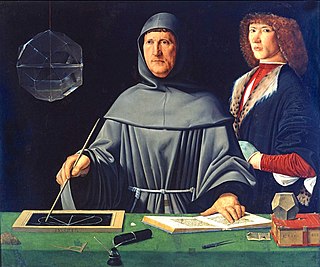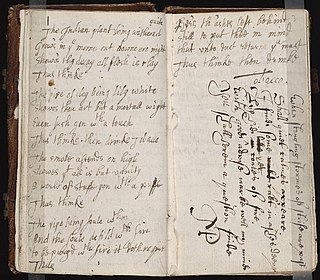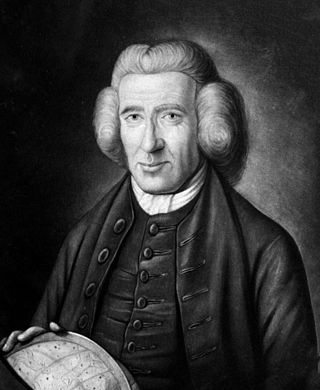
Bookkeeping is the recording of financial transactions, and is part of the process of accounting in business and other organizations. It involves preparing source documents for all transactions, operations, and other events of a business. Transactions include purchases, sales, receipts and payments by an individual person or an organization/corporation. There are several standard methods of bookkeeping, including the single-entry and double-entry bookkeeping systems. While these may be viewed as "real" bookkeeping, any process for recording financial transactions is a bookkeeping process.

Fra. Luca Bartolomeo de Pacioli was an Italian mathematician, Franciscan friar, collaborator with Leonardo da Vinci, and an early contributor to the field now known as accounting. He is referred to as the father of accounting and bookkeeping and he was the first person to publish a work on the double-entry system of book-keeping on the continent. He was also called Luca di Borgo after his birthplace, Borgo Sansepolcro, Tuscany.
Double-entry bookkeeping, also known as double-entry accounting, is a method of bookkeeping that relies on a two-sided accounting entry to maintain financial information. Every entry to an account requires a corresponding and opposite entry to a different account. The double-entry system has two equal and corresponding sides known as debit and credit. A transaction in double-entry bookkeeping always affects at least two accounts, always includes at least one debit and one credit, and always has total debits and total credits that are equal. The purpose of double-entry bookkeeping is to allow the detection of financial errors and fraud.

Debits and credits in double-entry bookkeeping are entries made in account ledgers to record changes in value resulting from business transactions. A debit entry in an account represents a transfer of value to that account, and a credit entry represents a transfer from the account. Each transaction transfers value from credited accounts to debited accounts. For example, a tenant who writes a rent cheque to a landlord would enter a credit for the bank account on which the cheque is drawn, and a debit in a rent expense account. Similarly, the landlord would enter a credit in the rent income account associated with the tenant and a debit for the bank account where the cheque is deposited.

Georg Christoph Lichtenberg was a German physicist, satirist, and Anglophile. As a scientist, he was the first to hold a professorship explicitly dedicated to experimental physics in Germany. He is remembered for his posthumously published notebooks, which he himself called Sudelbücher, a description modelled on the English bookkeeping term "waste books" or "scrapbooks", and for his discovery of tree-like electrical discharge patterns now called Lichtenberg figures.

Commonplace books are a way to compile knowledge, usually by writing information into books. They have been kept from antiquity, and were kept particularly during the Renaissance and in the nineteenth century. Such books are similar to scrapbooks filled with items of many kinds: sententiae, notes, proverbs, adages, aphorisms, maxims, quotes, letters, poems, tables of weights and measures, prayers, legal formulas, and recipes.

A trial balance is a list of all the general ledger accounts contained in the ledger of a business. This list will contain the name of each nominal ledger account in the order of liquidity and the value of that nominal ledger balance. Each nominal ledger account will hold either a debit balance or a credit balance. The debit balance values will be listed in the debit column of the trial balance and the credit value balance will be listed in the credit column. The trading profit and loss statement and balance sheet and other financial reports can then be produced using the ledger accounts listed on the same balance.

In bookkeeping, an account refers to assets, liabilities, income, expenses, and equity, as represented by individual ledger pages, to which changes in value are chronologically recorded with debit and credit entries. These entries, referred to as postings, become part of a book of final entry or ledger. Examples of common financial accounts are sales, accountsreceivable, mortgages, loans, PP&E, common stock, sales, services, wages and payroll.

In bookkeeping, a general ledger is a bookkeeping ledger in which accounting data are posted from journals and aggregated from subledgers, such as accounts payable, accounts receivable, cash management, fixed assets, purchasing and projects. A general ledger may be maintained on paper, on a computer, or in the cloud. A ledger account is created for each account in the chart of accounts for an organization and is classified into account categories, such as income, expense, assets, liabilities, and equity; the collection of all these accounts is known as the general ledger. The general ledger holds financial and non-financial data for an organization. Each account in the general ledger consists of one or more pages. An organization's statement of financial position and the income statement are both derived from income and expense account categories in the general ledger.

A general journal is a daybook or subsidiary journal in which transactions relating to adjustment entries, opening stock, depreciation, accounting errors etc. are recorded. The source documents for general journal entries may be journal vouchers, copies of management reports and invoices. Journals are prime entry books, and may also be referred to as books of original entry, from when transactions were written in a journal before they were manually posted to accounts in the general ledger or a subsidiary ledger.

James Ferguson was a Scottish astronomer. He is known as the inventor and improver of astronomical and other scientific apparatus, as a striking instance of self education and as an itinerant lecturer.
The fundamental accounting equation, also called the balance sheet equation, represents the relationship between the assets, liabilities, and owner's equity of a person or business. It is the foundation for the double-entry bookkeeping system. For each transaction, the total debits equal the total credits. It can be expressed as furthermore:
A bought ledger is a system in accounting by which a business records and monitors its creditors. The purchase ledger contains the individual accounts of suppliers from whom the business has made purchases on credit. Information on invoices and credit notes received, and payments made, are recorded in the supplier's account using the debits and credits system, with the balance of each account at a given moment representing the amount currently owed to that supplier.
Single-entry bookkeeping, also known as, single-entry accounting, is a method of bookkeeping that relies on a one-sided accounting entry to maintain financial information. The primary bookkeeping record in single-entry bookkeeping is the cash book, which is similar to a checking account register, except all entries are allocated among several categories of income and expense accounts. Separate account records are maintained for petty cash, accounts payable and receivable, and other relevant transactions such as inventory and travel expenses. To save time and avoid the errors of manual calculations, single-entry bookkeeping can be done today with do-it-yourself bookkeeping software.
Notebook is a style of writing where people jot down what they have thought or heard at the spur of moment. The contents of a notebook are unorganized, and the number of subjects covered in a notebook are unlimited: a paragraph of autobiography can be followed immediately by one on astronomy or one on history.
Amatino Manucci was a merchant based in Nîmes, France, in the last 13th century, whose work includes the earliest extant accounting of double-entry bookkeeping, although he is not credited for inventing this accounting technique.

Della mercatura e del mercante perfetto written by Benedetto Cotrugli around 1400 was the first bookkeeping manuscript and trade manual. The title has been translated in English by the alternate names of Of commerce and the perfect merchant, On merchantry and the perfect merchant, and On trade and the perfect dealer.
The history of accounting or accountancy can be traced to ancient civilizations.
A purchase returns journal is a prime entry book or a daybook which is used to record purchase returns. In other words, it is the journal which is used to record the goods which are returned to the suppliers. The source document which is used as an evidence in recording transactions into purchase returns journal is the Debit note.






